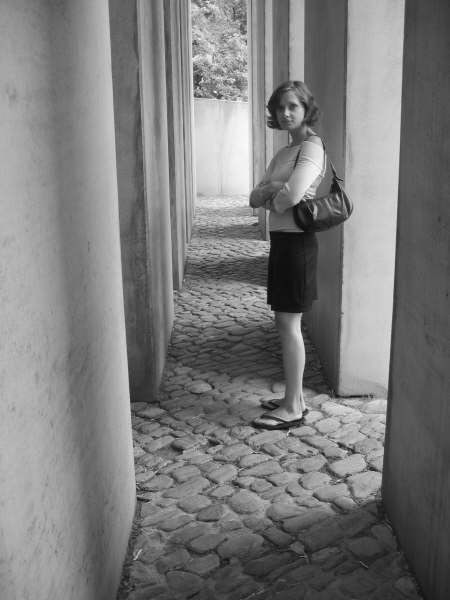 On the left is a projected view of Daniel Libeskind's new crystal design for the Royal Ontario Museum's extension. The image is taken from Libeskind's website. The ROM is touting the current construction of this extension as part of the institution's total rebirth. "Renaissance ROM is one of the most important architectural commissions of our time," boasts the ROM's website. The project, the website continues, "...will simultaneously restore one of Canada's historic landmarks to its original splendour and create a new signature building for the city of Toronto."
On the left is a projected view of Daniel Libeskind's new crystal design for the Royal Ontario Museum's extension. The image is taken from Libeskind's website. The ROM is touting the current construction of this extension as part of the institution's total rebirth. "Renaissance ROM is one of the most important architectural commissions of our time," boasts the ROM's website. The project, the website continues, "...will simultaneously restore one of Canada's historic landmarks to its original splendour and create a new signature building for the city of Toronto."Sounds fantastic! I love the ROM. I was a Saturday Morning Club-goer for years, and that experience continues to make me feel at home in the Museum. [1] The ROM was an integral part of my unique experience of growing up in Toronto. I'm glad that Libeskind's design was tailor-made for the great city.
 Or was it? On the right is a 2006 construction photo taken from Daniel Libeskind's website. It depicts his extension to the Denver Art Museum. Hmmm. The geometric projections and intersecting line design features look familiar, don't they? Below is a photo of another of Libeskind's unique designs: The Jewish Museum, Berlin, opened 2001 in the downtown core of the German capital.
Or was it? On the right is a 2006 construction photo taken from Daniel Libeskind's website. It depicts his extension to the Denver Art Museum. Hmmm. The geometric projections and intersecting line design features look familiar, don't they? Below is a photo of another of Libeskind's unique designs: The Jewish Museum, Berlin, opened 2001 in the downtown core of the German capital. “I was inspired by the mountains”, is how Libeskind explained his design for the Denver Art Museum, opened 7 October 2006. Curiously, there are no mountains visible from downtown Berlin. When the Jewish Museum opened in 2001, Libeskind explained that its design evoked the absence of Berlin’s Jewish citizens. There are no mountains nearby Toronto, and Libeskind has stated that his “Renaissance ROM” design illustrates the relationship between history and the new.
“I was inspired by the mountains”, is how Libeskind explained his design for the Denver Art Museum, opened 7 October 2006. Curiously, there are no mountains visible from downtown Berlin. When the Jewish Museum opened in 2001, Libeskind explained that its design evoked the absence of Berlin’s Jewish citizens. There are no mountains nearby Toronto, and Libeskind has stated that his “Renaissance ROM” design illustrates the relationship between history and the new. Is the concept of site-specific design alien to Mr. Libeskind? Does not a city’s particular history and culture demand a museum that will honour its individuality? I’d bet a whole pile of Denver Nuggets that few Denverites think their urban culture is interchangeable with that of Torontonians, or Berliners. Yet within two years, two of our major North American Museums will have chosen NOT to support cutting-edge design in their major architectural additions. Instead, they will have relied on near-identical architecture to communicate wildly different messages. Our ROM could have avoided relying on past designs. It could have, instead, opted for architecture that reflected Toronto’s unique past, and particular cultural heritage.
As intelligent citizens of the world’s dynamic cities, we need not support architectural redundancy. If we are informed of great international designs, we can demand that our own cultural institutions – as well as our municipal and provincial governments – embrace architectural innovation.
--------------------------------------------------------------------------------
[1]. The ROM's Saturday Morning Club offers a number of really neat educational programs for kids. Each program runs for approximately 8 weeks, with 3-hour long meetings every Saturday morning.

1 comment:
Hi Lauren, I like your post a lot, and share your concern for site/city/museum specific architecture. I drove by the "Rennaisance ROM" on the holidays. I was appalled. Libeskind claims that his design reflects the "relationship" between history and the new. Yeah- a disfunctional relationship. It looks like Libeskind's addition is in the process of eating the ROM for dinner! oy oy oy.
m.
Post a Comment